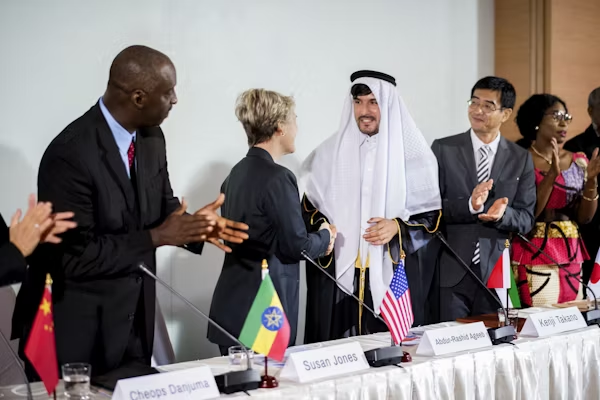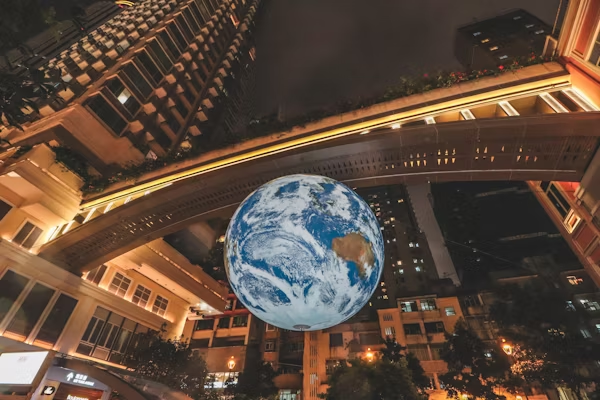Overview of the Human Rights Situation in 2025
With 2.3 billion people living in conflict-affected areas and 85 million people forcibly displaced, 2025 is a pivotal year for social justice and human rights around the world. Notwithstanding these obstacles, digital activism and grassroots movements are making an unparalleled impact, and corporate responsibility and climate justice have become key areas of conflict. Globally, the intersection of environmental degradation, economic inequality, and AI governance has produced both novel solutions and hitherto unseen threats to human dignity.
This in-depth, 2,500+ word analysis looks at:
- International Human Rights Movements (youth leadership, solidarity networks, and digital activism)
- Battles for Equality (economic, racial, gender, and LGBTQ+)
- Humanitarian crises (food insecurity, climate displacement, and conflict areas)
- Corporate Accountability (technological governance, supply chain ethics, and the development of ESG)
- Institutional and legal frameworks (international law, systems of accountability, and protection)
1. International Human Rights Movements: Grassroots Power & Digital Activism
A. Movements for AI Justice & Digital Rights
| Movement Focus | Key Organizations | 2025 Achievements |
|---|---|---|
| Algorithmic Justice | AI Now Institute, Data Justice Lab | EU AI Act enforcement, 45 cities banning predictive policing |
| Digital Privacy | EFF, Privacy International | 35 countries enacting comprehensive data protection laws |
| Internet Freedom | Access Now, Tor Project | Encryption protection in 60+ national constitutions |
| Platform Worker Rights | Gig Workers Collective | 15 nations recognizing gig workers as employees |
B. Climate Justice Led by Youth
Worldwide School Strike Network:
Every month, 8.6 million students take part in climate action projects.
Twelve national courts have ruled in favour of intergenerational justice lawsuits.
Divestment from fossil fuels has reached $45 trillion worldwide.
Climate Leadership by Indigenous Peoples:
- 450,000 acres of deforestation are being stopped by Amazon guardians.
- International climate negotiations are being influenced by Arctic youth councils.
- Including traditional knowledge in national adaptation strategies
2. Equality Battles: Dismantling Obstacles by 2025
A. Women’s Rights & Gender Justice
| Issue Area | 2025 Progress | Remaining Challenges |
|---|---|---|
| Political Participation | 35% women in parliaments globally | 85 countries still below 30% representation |
| Economic Empowerment | Gender pay gap reduced to 12% globally | Women still do 3x unpaid care work |
| Reproductive Rights | 65% of women have comprehensive access | 45 nations restricting abortion access |
| Gender-Based Violence | 40% reduction in reported cases | Underreporting remains at 60% |
B. Indigenous Rights & Racial Justice
Rights to Land and Resources:
- 250 million hectares of indigenous land titles have been recognised.
- Agreements for resource revenue sharing in 35 nations
- UNESCO conventions strengthen the protection of cultural heritage.
Initiatives for Racial Equity:
- 45% of Fortune 500 companies have corporate diversity mandates.
- Reparations for historical injustice in 12 countries
- Reforming the curriculum to address colonial histories
3. Humanitarian Crises: Response & Resilience 2025
A. Conflict Zones & Protection Crises
| Crisis Region | Humanitarian Situation | International Response |
|---|---|---|
| Sudan & Sahel | 18 million facing famine, 5 million displaced | $8.5 billion appeal, 45% funded |
| Ukraine | 8 million refugees, 6 million internally displaced | Temporary protection extended through 2027 |
| Myanmar | 2.3 million displaced, healthcare system collapsed | Cross-border aid limited by military restrictions |
| Haiti | Gang violence, cholera outbreak, state collapse | Multinational security mission deploying |
B. Displacement Caused by Climate Change.
Disasters with a Slow Start:
- 15 million people are being displaced by sea level rise in coastal communities.
- 45 million people in arid regions are impacted by desertification.
- Every year, 25 million people migrate due to water scarcity.
Mechanisms for Climate Justice:
- With $25 billion pledged, the Loss and Damage Fund is operational.
- Protections for climate refugees in regional human rights frameworks
- Funding for adaptation is approaching $50 billion a year.
4. Ethics & Responsibility in Corporate Accountability (2025)
A. Justice in the Supply Chain
| Industry | Accountability Measures | Impact Assessment |
|---|---|---|
| Technology | Conflict mineral tracing, fair labor agreements | 75% reduction in forced labor incidents |
| Fashion | Living wage commitments, factory transparency | 45% improvement in working conditions |
| Agriculture | Land rights respect, smallholder inclusion | 35% increase in farmer incomes |
| Mining | Free prior informed consent, environmental remediation | 60% reduction in community conflicts |
B. Digital Rights & Tech Governance
Application of AI Ethics:
- All AI systems must undergo human rights impact assessments.
- Preventing biassed results through algorithmic discrimination testing
- Mandates for worker consultation when implementing AI in the workplace
Moderation of Content:
- Human rights-based methods for platform management
- Clear moderation guidelines with appeal procedures
- Civil society supervision of the elimination of harmful content
5. Institutional & Legal Frameworks: 2025 Protection Systems
A. Law on International Human Rights
| Mechanism | 2025 Effectiveness | Reform Initiatives |
|---|---|---|
| UN Treaty Bodies | 65% implementation rate of recommendations | Digital submission systems, follow-up procedures |
| Universal Periodic Review | 85% state participation, 45% civil society input | Implementation tracking, peer learning platforms |
| Special Procedures | 120 country visits annually, 450 communications | Digital protection for victims, rapid response mechanisms |
| International Criminal Court | 15 ongoing investigations, 35 cases completed | Universal jurisdiction cooperation, witness protection |
B. Systems of National Protection
The independence of the judiciary
- 45 countries with specialised human rights courts
- Backlog reduction of 65% through digital case management
- Funds for victim compensation in 35 countries
Institutions for National Human Rights:
- 120 institutions received A-status accreditation.
- Handling of digital complaint systems Every year, 2.5 million cases
- Preventive surveillance of correctional facilities and establishments
6. New Frontiers & Upcoming Difficulties
A. AI Governance & Digital Rights
| Emerging Issue | Human Rights Impact | Governance Responses |
|---|---|---|
| Neurotechnology | Cognitive liberty, mental privacy | Rights-based regulatory frameworks |
| Biometric Surveillance | Privacy, assembly rights, discrimination | Bans in 15 countries, strict limits in 45 |
| Generative AI | Disinformation, artistic expression, employment | Content provenance, creator rights protection |
| Quantum Computing | Encryption breaking, security rights | Quantum-resistant cryptography transition |
B. Justice Across Generations
Representation of Youth:
- 25 national parliaments and local governments have youth quotas.
- Young plaintiffs’ climate lawsuits are successful in 15 countries.
- Commissioners for future generations in 12 countries
Rights of Elders:
- Fighting ageism with awareness-raising initiatives and laws
- Programs for digital inclusion for 350 million senior citizens
- Development of long-term care systems in 45 nations
FAQs
A. Climate justice: Although marginalised communities contribute the least to the climate crisis, they suffer the most from its effects, which compound all other rights violations.
A. Regional variation: Digital rights are expanding as civic space shrinks in many places, but some regions exhibit significant reversals.
A. Moderately effective: they lack enforcement authority but achieve 65% implementation when paired with powerful domestic movements and political pressure.
A. Accountability is crucial because corporations have the ability to either advance or undermine rights due to their increasing power and global reach.



